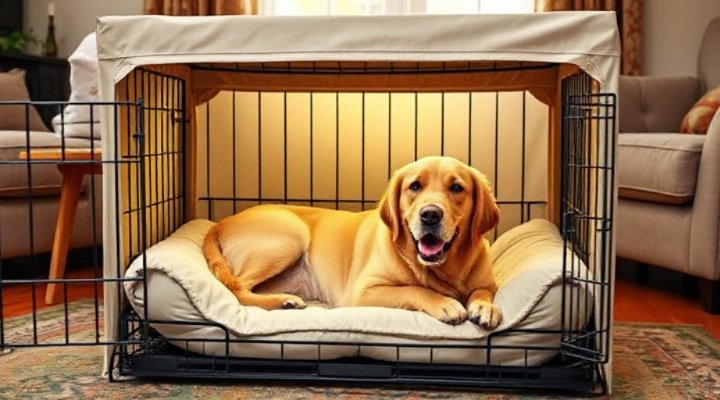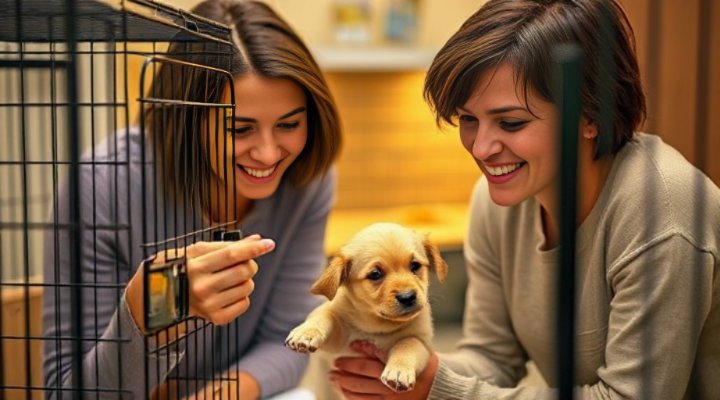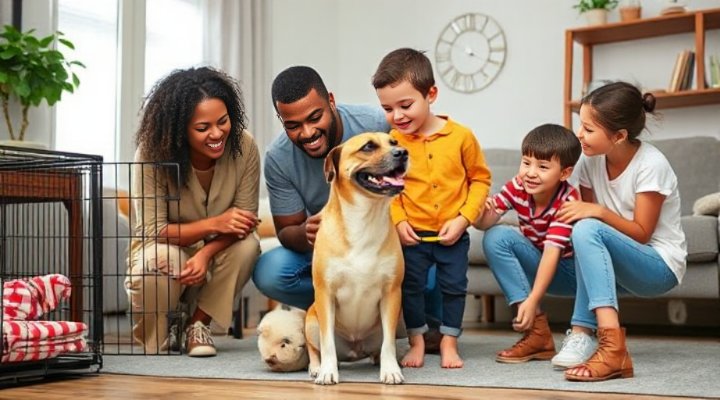Cage training, often referred to as crate training, is one of the most effective ways to provide your dog with a safe haven they can call their own. Contrary to some misconceptions, when done correctly, crate training doesn’t feel like punishment to dogs – in fact, most come to view their crate as a comforting den-like space. In other words, it becomes their personal retreat where they can relax and feel secure.

Why Cage Training is Beneficial for Your Dog
Firstly, dogs are naturally den animals, meaning they instinctively seek out small, enclosed spaces for security. That is to say, a properly introduced crate taps into this natural instinct. Most importantly, crate training provides numerous benefits:
- Creates a safe space during stressful situations (like thunderstorms or fireworks)
- Aids in house training by taking advantage of dogs’ natural reluctance to soil their sleeping area
- Prevents destructive behavior when unsupervised
- Makes travel safer and less stressful
- Provides a recovery space after medical procedures
For example, when I first crate trained my rescue dog Max, he went from being anxious during storms to voluntarily retreating to his crate at the first rumble of thunder – it became his storm bunker!

Choosing the Right Crate for Cage Training
Selecting the appropriate crate is crucial for successful cage training. Further, the crate should be:
- Large enough for your dog to stand, turn around, and lie down comfortably
- Not so large that they can eliminate in one corner and sleep in another
- Made of durable materials (wire crates are popular for ventilation and visibility)
- Equipped with comfortable bedding
Meanwhile, for puppies, you might consider a crate with dividers that can be adjusted as they grow. Similarly, older dogs might benefit from orthopedic bedding for joint support. The Crate Training an Older Dog guide on our site offers specific tips for senior pets.
Step-by-Step Cage Training Process
Subsequently, here’s how to introduce the crate positively:
- Let your dog explore: Place the crate in a common area with the door open and let them investigate at their own pace.
- Make it inviting: Toss treats inside and praise any interaction with the crate.
- Feed meals nearby: Gradually move the food bowl closer to, then inside the crate.
- Begin closing the door: Start with very short durations while you’re present.
- Gradually increase time: Build up slowly to longer periods as your dog becomes comfortable.
To clarify, this process might take days or weeks depending on your dog’s temperament. The American Kennel Club’s Crate Training 101 offers additional professional guidance.

Common Cage Training Mistakes to Avoid
However, there are several pitfalls that can undermine your cage training efforts:
- Using the crate as punishment (this creates negative associations)
- Leaving your dog crated too long (maximum 4-5 hours for adults, less for puppies)
- Rushing the process (each dog adapts at their own pace)
- Neglecting exercise before crating (a tired dog settles more easily)
On the other hand, when done correctly, you’ll notice your dog voluntarily entering their crate for naps – this is the ultimate sign of success! Our article on Rescue Dog Training includes special considerations for adopted pets who may need extra patience with crate training.
Making the Crate Comfortable
Moreover, the crate should be a welcoming space:
- Add soft, washable bedding
- Include a safe chew toy or puzzle feeder
- Consider covering part of wire crates for a more den-like feel
- Place it in a quiet but social area (not isolated)
For instance, my dog particularly loves his crate when it contains a frozen Kong stuffed with peanut butter – it makes crate time something he looks forward to!

Transitioning from Cage Training to Freedom
Eventually, once your dog is fully house-trained and not destructive, you might choose to phase out the crate. Likewise, this should be a gradual process:
- Start by leaving the crate door open in a puppy-proofed room
- Initially leave for very short periods
- Gradually increase time and space as your dog proves reliable
In the same vein, some dogs continue to enjoy their crate as a safe space even when it’s no longer necessary for confinement. The Dog Socialisation Classes article discusses how proper socialization complements crate training.
Final Thoughts on Cage Training Your Dog
In conclusion, crate training, when approached with patience and positivity, provides numerous benefits for both dogs and their owners. To sum up, remember:
- Make introductions gradual and positive
- Never use the crate as punishment
- Keep training sessions short and rewarding
- Be consistent with your approach
Most importantly, celebrate small victories along the way! Every dog learns at their own pace, but with time and consistency, your pup will come to view their crate as their personal safe haven.
Related Keywords: dog crate training, how to crate train a puppy, best dog crates, crate training schedule, positive reinforcement crate training, house training with crate, dog anxiety solutions, safe spaces for dogs
